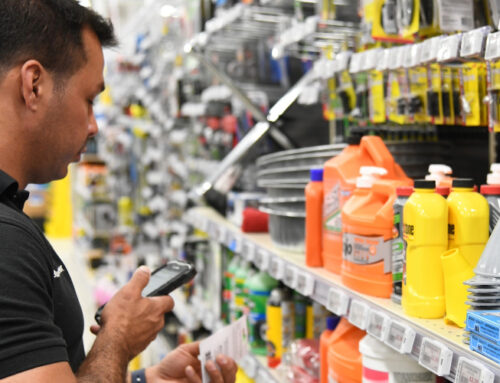From a young age, most of us are taught to be polite, work together with others and use our words to solve problems. These attributes, called soft skills, are important for our everyday human experience, and they’re also essential in any workplace setting.
However, recent studies have found that employers believe their employees lack these critical skills, and the deficiencies are having a negative impact on their businesses.
Wiley Education Services and Future Workplace surveyed 600 human resources leaders in 2019 and found that 64 percent of the respondents believe there is a gap in soft skills in their company and 42 percent believe that gap is making their companies less efficient.
On the following pages, discover best practices for improving soft skills in your business and making them a key part of your company’s culture.
 Defining Soft Skills
Defining Soft Skills
When reading applications or interviewing employees, you can clearly see if someone has hard skills, such as experience in a trade, proficiency in software programs or bilingualism. Soft skills are harder to pick out.
According to job posting platform Indeed, soft skills are “abilities that relate to how you work and interact with people.” Common soft skills in the workplace include written and verbal communication, teamwork, leadership, critical thinking and empathy. Other less common but still important soft skills are project management, business acumen and handling complexity. But what do these skills look like in a retail setting?
Written and verbal communication are straightforward; they are how your employees interact and communicate with customers and each other. Teamwork and leadership are also easy to spot among your staff. Some employees are naturally more adept at showing initiative with projects, leading a team and working well with everyone.
When a retail employee can design a creative merchandising display, deal with customers or think outside the box when work issues come up, that’s an example of critical thinking in action, says Susan Zhu, senior researcher with the Society for Human Resource Management (SHRM).
Retail employees are often given explicit directions about what to do in a retail situation, but if the situation is not straightforward, the employee may have difficulty taking charge and solving problems.
Those employees who can handle outside-the-box situations are showing they can handle complexity.
“It’s fine when things are going well, but when there are unplanned situations or emergencies, an employee who is unable to deal with complexity and ambiguity will not know how to act in those situations effectively,” Zhu says.
Maybe you haven’t been formally calling these attributes soft skills, but you do know these qualities are important in your employees. And if you’ve found a lack of these skills in new job candidates or your own employees, you’re not alone.
Examining the Gap
In the 2019 Global Skills Shortage Report published by SHRM, 75 percent of employers from around the U.S. who were surveyed believe there is a shortage of hard and soft skills in job candidates.
The survey asked respondents to name what specific soft skills they feel are missing in employees, and SHRM organized those skills into three categories: problem-solving, critical thinking, innovation and creativity; ability to deal with complexity and ambiguity; and communication.
While it’s reasonable to expect employees to be prepared for their role, a gap in soft skills may not always be their fault.
Zhu recommends considering the work context when looking at any potential soft skills gap.
“Some workplaces may say, ‘My new hires are not solving problems or coming up with creative solutions.’ But it’s possible that those workplaces didn’t create a culture or environment for people to feel comfortable voicing new ideas,” Zhu says. “I think that’s an important issue to consider as we talk about the skills gap in general. It is up to companies to provide the necessary training and development for their employees.”
Fortunately, there are steps business owners can take to improve soft skills among their employees and create a culture that encourages learning and using these skills.
 The Importance of Soft Skills
The Importance of Soft Skills
As a former general manager of seven hardware stores and current retail consultant for the North American Hardware and Paint Association (NHPA), Kim Peffley knows firsthand how important soft skills are for retailers.
“There is so much time and energy spent teaching hard skills, but there is a whole other side of skills that people need to have to not only do well in life, but to thrive in a retail work setting,” Peffley says. “Retail employees need to know how to communicate with customers and each other, solve problems and use time management to complete their work tasks.”
With four locations in the central mountains of Colorado, The Paint Bucket serves its customers with superb customer service, which keeps customers coming back again and again. Mike Tibbetts, manager and purchaser, attributes his employees’ soft skills as one of the main reasons the stores are popular with customers.
“Soft skills are huge for us. They are imperative to any business and something you need in today’s world to make your store run smoothly and be successful,” Tibbetts says. “For us, we find soft skills are crucial for interacting with customers, building relationships with them and serving their needs at a high level.”
Each of the four stores has very different customer demographics, but employees are trained to treat each customer the same—with friendliness, helpfulness and respect.
“People just want to be treated well, no matter who you are, so our employees interact with our customers and each other with respect and kindness,” Tibbetts says. “We are successful because of our relationships.”
Building Soft Skills
When interviewing a job candidate, the No. 1 soft skill Tibbetts looks for is communication. He believes that having good communication skills feeds into developing skills in teamwork and problem-solving, which are other soft skills he desires in his employees.
“When you communicate well with others, you can work better with them to solve problems and serve your customers. I’ve been fortunate to have been able to work with a team that loves working together,” Tibbetts says. “We feed off each other and have gotten to the point where we know what the other person needs, sometimes without them even asking for it.”
Spotting work ethic and teamwork on a resume can be hard, says Tibbetts, and even during an interview, you can get the gist of someone’s soft skills, but you still don’t get a clear picture until you’re working with them. That’s why Tibbetts focuses on soft skills during a new employee’s training process.
Through the training process, as he’s teaching employees to mix paint and run the point-of-sale system, Tibbetts is emphasizing soft skills, showing how they apply to different parts of the job.
“During training, I factor in the soft skills more than the hard skills,” Tibbetts says. “We emphasize with our employees to work hard, work together and put customers first to make sure the customer is happy.”
Tibbetts also tries to lead by example, treating his employees how he expects them to treat one another and setting the tone for working together as a team.
“Everyone who works here knows that my employees are more important to me as people than as employees,” Tibbetts says. “It’s similar to raising my kids; I just try to lead by example, have fun and do a good job.”
He’s grateful for those who set a good example in his own life, so that he can be that example to his own employees.
“My grandfather taught me to be a nice, good person and to work hard, and the first manager I worked for instilled in me to put in the time
and effort at work and do whatever you can to make the customer happy,” Tibbetts says.
 Peffley says it is up to managers, team leaders and owners to hold their employees accountable, give consistent and constructive feedback and teach conflict resolution.
Peffley says it is up to managers, team leaders and owners to hold their employees accountable, give consistent and constructive feedback and teach conflict resolution.
“A lot of people are uncomfortable giving others negative feedback and so they avoid the situation,” she says. “As a leader, it’s the manager or owner’s responsibility to provide concrete feedback, both positive and negative, on a regular basis to help their employees grow. It also sets a good example on how to handle conflict and work together as a team.”
Managers and other leaders face several obstacles when it comes to teaching soft skills. Tibbetts believes that technology has had a negative impact on some soft skills, namely communication, and COVID-19 has also played a role.
“Being shut down for COVID-19 has sent a lot of soft skills backward because we’re not interacting with each other, which is at the core of using these strengths,” Tibbetts says. “Technology like text messaging and social media has made communication skills harder, too.”
Peffley echoes his sentiments, pointing out that during the pandemic, some retailers realized that not as many of their employees had the problem-solving and resilience skills needed to weather the challenges of COVID-19.
“No matter what type of team you manage, as leaders, we all need to do a better job to ensure our teams know how to solve problems,” Peffley says.
“You can’t rely on one or two employees who are good at finding solutions to problems. Everyone on the team needs to be able to solve problems and be resilient and adaptable to change.”
Despite these hurdles, a little time and effort can go a long way to improving and developing your employees’ soft skills. If you’re not sure where to start, focus on the basics.
Tibbetts says that every little success contributes to the overall goal. Just recently, he had a new, young employee who had little experience talking on a phone, but after a short training session, he was able to answer the phone and communicate appropriately.
“He was nervous taking a call that first time, but now he does a great job answering with his name and the store name,” Tibbetts says. “He even engages the customer, asking them how they are and starting a conversation with them to help solidify a relationship with that customer.”







